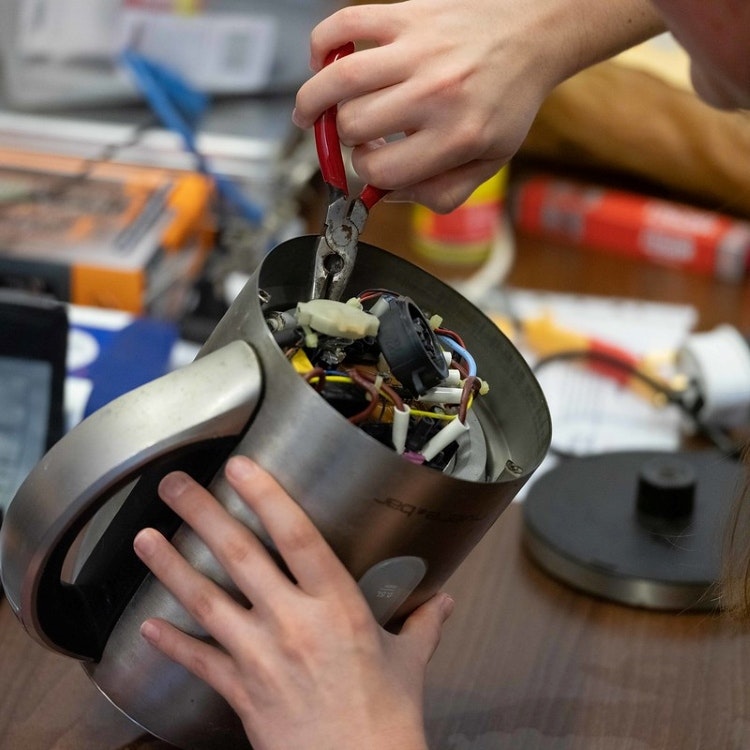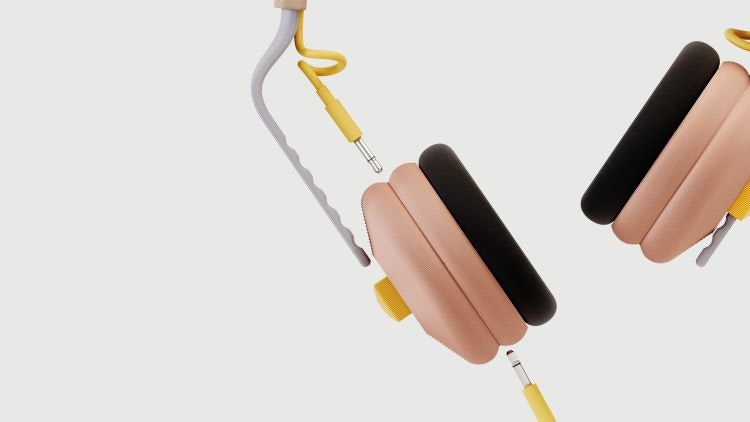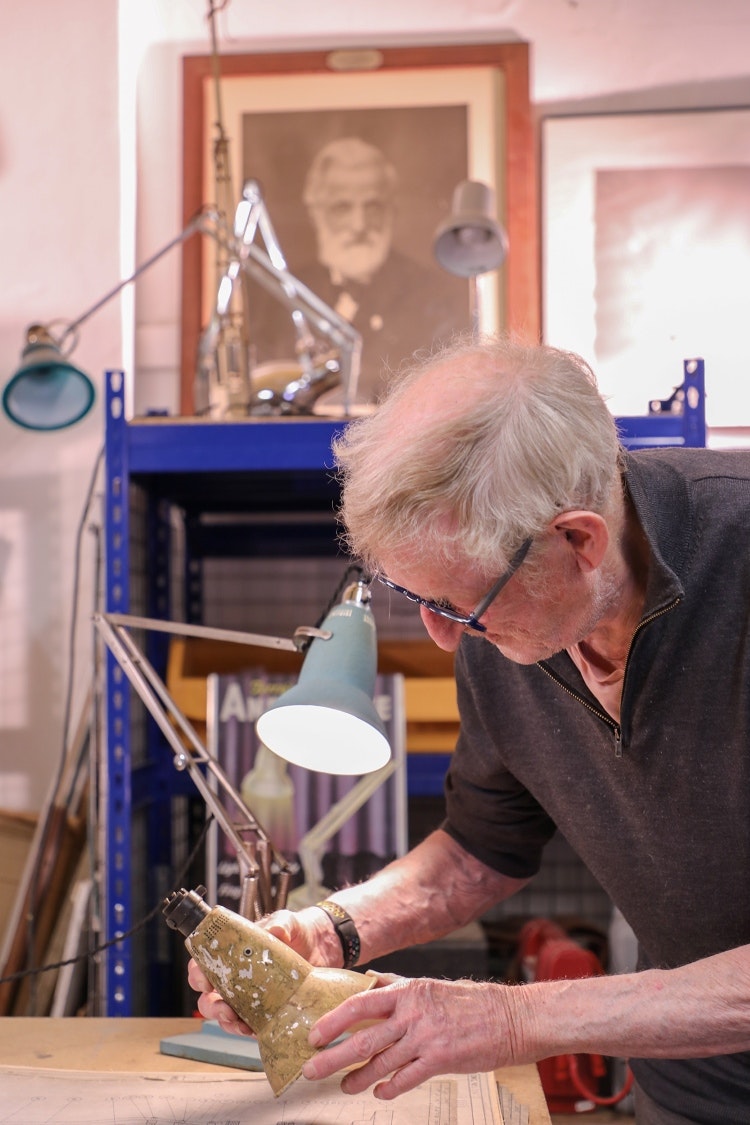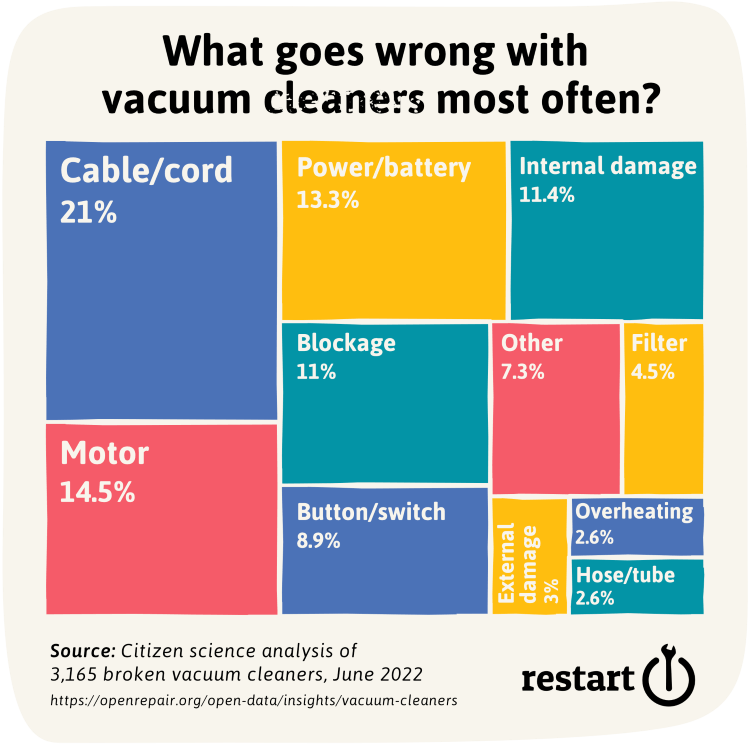“No designer wants to create a throwaway product”, says Ugo Vallauri, co-director of the Restart Project, a social enterprise ten years into its mission to reintroduce a culture of repair.
Yet despite ever-growing awareness of the global problem that waste constitutes, the numbers of items thrown away – all of which were at some point designed – continues to rise.
While the Restart Project’s work is grounded in a community repair movement, to tackle the multifaceted problem of waste, the group is also looking for design industry support and legislative change.
In 2018, the Restart Project released its Manchester declaration, which asked “UK legislators and decision-makers at all levels, as well as product manufacturers and designers, to stand with us for our Right to Repair”.
Tomorrow, 21 October, to coincide with International Repair Day, an update will be released in the form of the UK Reuse and Repair Declaration – which will ask the Government to make repair more affordable and expand right to repair regulations to cover all consumer products.
According to Restart, in addition to over 90 community repair groups, the Design Council has supported the new declaration along with Keep Britain Tidy and other NGOs, while business support comes from Back Market, Techbuyer and SUEZ recycling and recovery UK.

Among its demands, addressed to UK policymakers, are “expanding the UK’s right to repair regulations to cover all consumer products, strengthen design standards and remove barriers to repair for everyone”, Vallauri says.
But there is also “a need to keep inspiring designers to come up with solutions to the barriers we are seeing”, says Vallauri, adding: “We know that designers are on our side”.
What can design for repair look like?
Design Council senior Policy and advocacy manager Matilda Agace discusses how circularity and sustainable design has been on the Design Council’s agenda for many years – she describes encountering a mid-90s leaflet on the subject in the archive – but a focus on repairability is more recent, and particularly comes to the fore in this year’s edition of its Design for Planet Festival.
She sketches out the different ways repairability can be integrated into design in two key ways: the first and more obvious through product design, while the other is “the role of designers in public services, experience design and brand design, who create the environment through which repair becomes the norm”.
Batch.works founder and CEO Julien Vaissieres explains that as an agile manufacturer working with 3D-printing, the company was set up to offer circular manufacturing “as a service model, where we provide hardware, software and material”, he says.
“We on-board clients from ideation through to delivery of the product, as well as the end-of-life stage for the product”, he says. By walking clients through the entire process, Batch.works is “making sure we take full responsibility for what we make”.
He says that Batch.works’ clients are currently spread across three different sectors: it is currently working with a large UK retailer on its fixtures and fittings, which he notes is “a very wasteful sector”; casing and packaging; and the third is accessories and consumer.
While its process follows a circular model – using consumer post-industrial waste for materials, working with short supply chains, manufacturing on-demand and taking back products for “re-manufacture”, Vaissieres explains that repairability becomes particularly important with consumer products.
“Working with B2B is easiest, because you have control over where things are going”, he says. With consumer products, he argues, there is an added element of individual choice, which design needs to work harder to facilitate. If a product’s “story, packaging and everything is in that direction, then there is a strong incentive to either return, customise or send back the broken pieces” he says.

For repairable headphones Kibu, which Batch.works produced with design studio Morrama, repairability is first encouraged with a simplification of the product design into fewer, simpler parts. But also important is to see “what type of scheme we can bring to life with this project to incentivise people to not put it in the bin” – from offering a subscription model to discount incentives, Vaissieres explains.
As a product designed for kids, there is opportunity to engender better understanding in the next generation, using design to help them “understand the objects they have in their life, and their life cycle”, he adds.
Supporting repair retrospectively
While repairability can be designed into new products and business models, “it’s much harder for any business to support repair, or [influence] their consideration for materials and serviceability retrospectively”, says Adam Wade, managing director of Anglepoise.
Some designs lend themselves more to repair, he explains: “We’re fortunate that with Anglepoise, because of the general nature and construction – without belittling it – it’s a kit of bits that’s very easily understood”. Whereas for even a “relatively simple” piece furniture, assembly would have involved “heavy usage of adhesives” and elements which “go in once and never come out again”, he adds.
Yet while durability has long been a tenet of the company’s design ethos, Anglepoise has only formalised its lifetime guarantee and repair service in recent years. One prompt to doing so was a customer bringing in a lamp that was first given to him in 1947, Wade says. Then in a technical role at the company, he looked into repairing the product for him – which did turn out to be possible despite the decades-old design.

He explains that previously Anglepoise “would support certain customer requests for spares”, but in establishing a lifetime guarantee for its products, “you’ve obviously got to have evidence to back it up”, he says.
He adds that the “lowest impact” solution, which Anglepoise looks to offer, is for a customer to repair it themselves. For this, parts need to be made easily available, but a company also needs to factor in providing a higher level of after-sale support too, he says.
Wade suggests that while Anglepoise has been able to take this challenge on, it’s much harder for larger businesses, where the challenges are scaled. To hold large stocks of spare parts in a warehouse, for example, there is a “cost associated with that”, he adds.
What does it take to design for repair?
Cost is unsurprisingly one of the major barriers – both for manufacturers in adopting different practices, and in consumers in choosing repair over rebuying – as both Agace and Vallauri explain.
Vallauri argues that until there is “legislation levelling up the minimum requirements for product, manufacturers often take shortcuts to remain competitive”.
This might be cutting support or discarding modularity for price reasons, or more malicious is the desire to “make too much money from the provision of spare parts” or using “software as a weapon”, he adds – where lack of software support can prevent an item from being usable, despite the physical durability of the product itself.
However, “legislation isn’t high in the agenda of the UK Government”, says Vallauri. Although based in the UK, the team’s legislative efforts have often targeted change at a Europe-wide level, through its European Right to Repair campaign Repair.eu, where it works alongside environmental NGOs, repair groups, parts distributors and individuals.
In recent years this work has influenced two forthcoming pieces of EU legislation: a battery regulation requiring replaceable batteries due to come into effect in 2027, and the smartphone and tablets ecodesign regulation due for June 2025, which requires improved access to parts and increased durability of design.

“Tilting the playing field”
Agace agrees that there is much work still much to be done concerning legislation in the UK, but notes that positive signs include that the UK’s latest waste and resources policy, which “makes explicit mention to the importance of designing out waste”.
She notes that the Government’s preference “is always for an industry to set and enforce their own standards”, which “we know has limitations”, she says.
For its part, she explains that the Design Council is looking to “make really good industry-led repairability standards that are widely adopted.”
“Then maybe legislation can follow to tilt the playing field so that the people who aren’t designing [to these] standards don’t have a viable business model in the future”.
“What if repairers were involved in setting the design brief?”
To set these standards, the Design Council is continuing to look at examples within and outside the design industry; speakers at Design for Planet included Toast and Batch.works, for example, while she also highlights the work of SUEZ’s Renew Hub in Manchester, where waste is “triaged” before being sent to repair centres and resold.
Agace believes positive steps could be made through collaboration of this kind: “We find it really interesting [to consider] what designers could learn from working in these different settings. What if designers could spend a day in the repair parties and understand how their products are used in a totally different way”.
Or of the knowledge built by those at tool libraries or the technicians at the Library of Things, she says: “What if repairers were involved in setting the design brief?”
The Design Council hopes to incorporate such experience and advice into its Design for Planet Knowledge Hub, but Agace adds, “it’s not only developing technical knowledge – like knowing you should use screws rather than glue for example. It’s also developing the knowledge to challenge and change briefs”.
Banner image courtesy of Anglepoise, featured image by guruXOX via Shutterstock

- Design disciplines in this article
- Industries in this article
- Brands in this article










2 responses to “Where is the design industry in terms of right to repair?”
There is only so much the design industry can accomplish: Engineers, designers & product managers do what they are told or they do something else. Corporations HATE competition, especially when its against their own installed base. Every repaired/refurbished product is one less sales, which means lower revenue, lower margins, lower stock prices and – worst of all – lower executive compensation.
This will not change unless and until manufacturers are forced to be responsible for the downstream disposal and environmental remediation costs of their products.
One sale less but a longer subscription time, sales of spare parts and final materials recuperation for re-manufacture can compensate. Plus improved company image, plus abiding by the laws…..think of renting instead of buying.
But agree designers can only suggest, few have decision making positions.